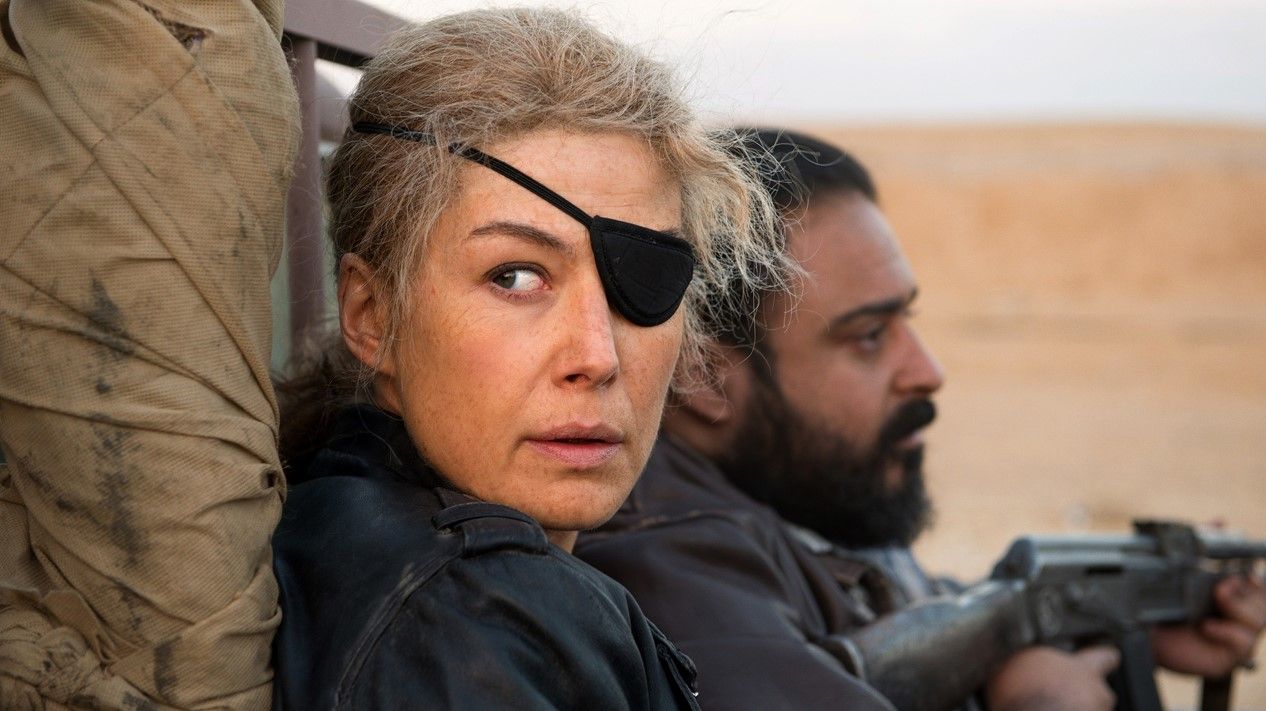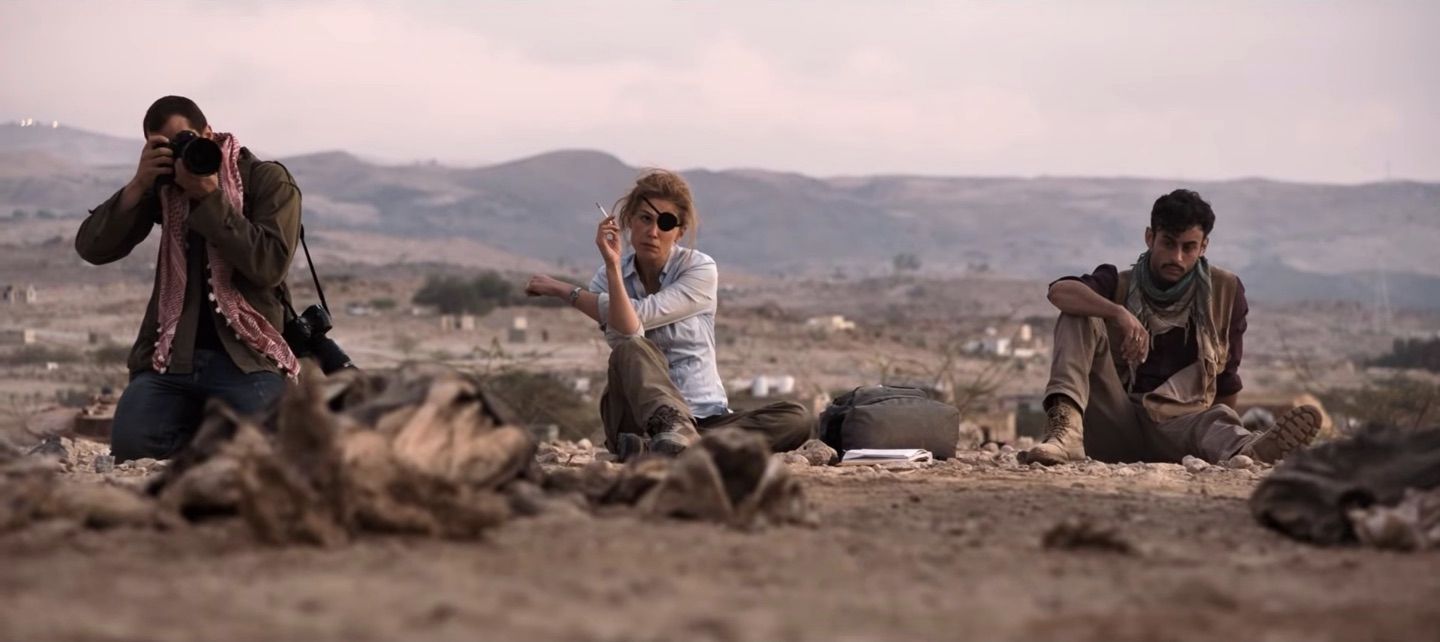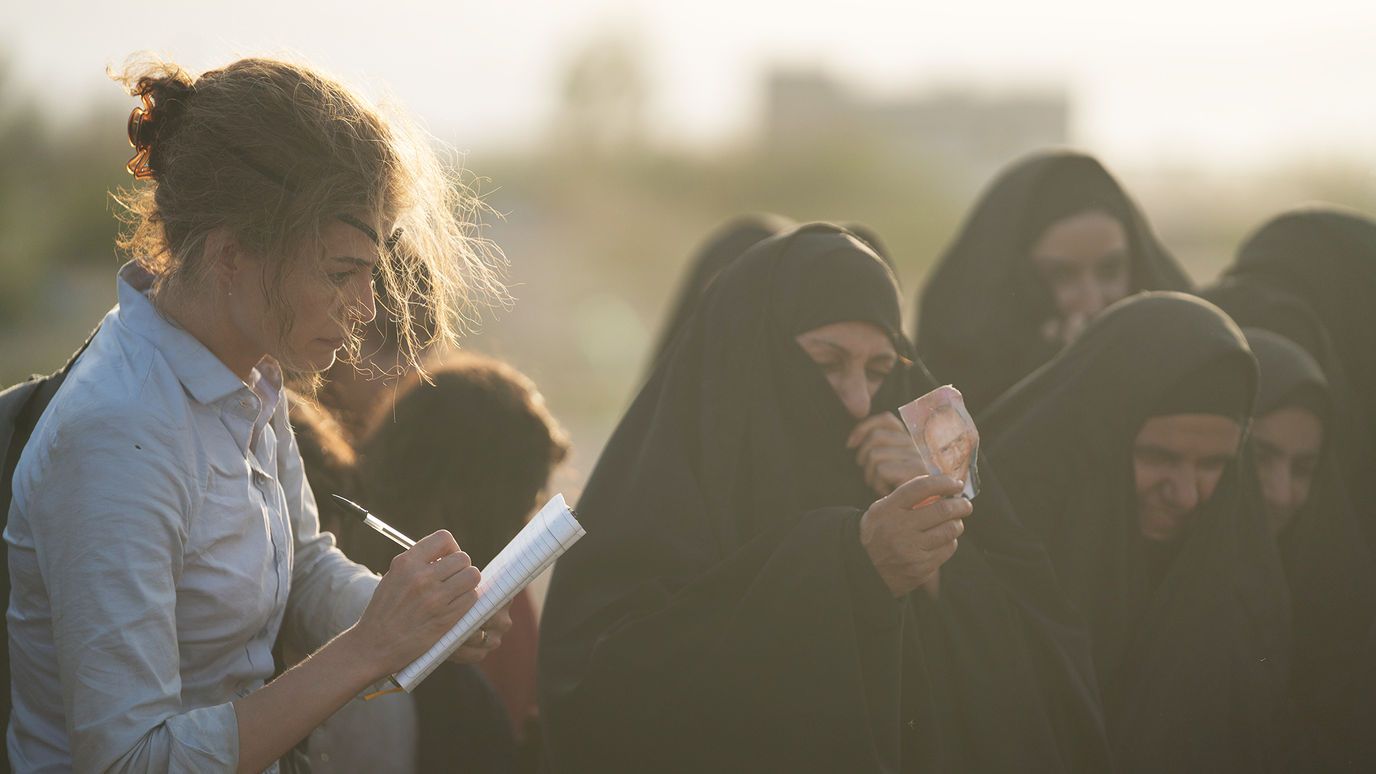A Private War, without a doubt, was made to shake us out of our escapism -- and comfort-oriented culture. It tells a powerful, haunting story about front-line journalism and gives voice to civilians living in war zones. Filmmaker Matthew Heineman (Cartel Land, City of Ghost) makes us question our own courage, solidarity, and willingness to face the harshness of the world.
He opened up about the difficulty of making A Private War to Indie Wire by saying, "Your human instinct is to put the camera down and give someone space. But your obligation as a filmmaker is to capture the truth by keeping the camera rolling."
In these modern times, it is easy to stay disengaged, look at a photo, or read a headline on Twitter and believe we understand the issue at hand. It is easy to keep conflicts that override communities, regions, countries at arm's length. A Private War humanizes complex stories and is on a mission to get people to care. The film mediates the cost of war both on those who are caught in the middle and those who pursue to give truthful reports on conflicts. It celebrates people who shed light on dark corners of the world.
The Story of Marie Colvin
A Private War is a character study about iconic war correspondent Marie Colvin who went to the world's most dangerous places to witness the atrocities of war. She covered conflicts in Chechnya, Sierra Leone, Tunisia, Egypt, Libya, Zimbabwe, East Timor, and Kosovo. She lost sight in her left eye when she got struck by a blast from a rocket-propelled grenade (RPG) while reporting on the Sri Lankan Civil War. Consequently, she suffered from post-traumatic stress disorder and required hospitalization.
American-born Sunday Times journalist Colvin died while covering the siege of Homs in the Middle East.
The movie is based on Marie Brenner's 2012 Vanity Fair article, which tracked the very last moments of Colvin's life in Syria. A Private War was shot in London and Jordan, anchored by Rosamund Pike's (Gone Girl, I Care A Lot) fantastic performance. She completely loses herself in the role of Marie, radiating deep physical and emotional turmoil in every frame. Pike portrayed her with immaculate precision, a complicated, raw, and direct woman with a troubled soul and suppressed vulnerabilities. Colvin was a heroine, yet she was not flawless.
She was on a quest to make people understand other people's suffering, and that purpose empowered her to pass on her own fears and traumas. In one particular scene, Pike as Colvin says, "I hate being in a war zone, but I also feel compelled to see it for myself." We may say that she suffered from an extreme form of empathy and a lack of purpose in her own private life.
Telling Real Stories
It is an imperfect film, sometimes shaky in its narrative's focus, rhythm and structure, yet it is timely, unmissable, and emotionally powerful. Heineman, a documentary maker by trade, started pre-production by spending a year researching and re-writing. Then he interviewed Syrian, Iraqi, Sri Lankan, Libyan, and Afghan refugees displaced in Jordan. He chose their personal stories as the real fabric of his movie.
An overwhelming number of the extras we see in the film are non-professional actors who have lived through the same experiences they recount and relive. This gives heightened energy and immense authenticity to the depiction of conflict zones. For instance, in the scene where mass graves are uncovered, Iraqi women, who had lost loved ones to wars, erupt into an unscripted chant for the dead. Harrowing, disturbing, touching. A great example of why telling and re-telling stories help, heal, assist in finding some closure even for the most traumatic events.
As much as it is possible, Heineman stays away from Hollywoodization and brings unusual truthfulness to his story by finding the balance between pain and passion as well as documentary and fiction. Paul Conroy's presence and instructions did contribute to this astonishing level of accuracy. Conroy, Colvin's great ally, friend, and photographer, was an on-set advisor throughout the entire shoot. In the movie, he is portrayed by Jamie Dornan (Belfast, The Fall).
Colvin is an excellent example of how much power and influence one person's actions can have. Through her work, she brought the horror of wars to many who lived far from crisis spots. She provoked people to think. Moreover, Colvin affected many decisions made by people in power. For instance, she was credited with saving the lives of 1,500 people trapped in a compound by Indonesian-backed military forces. When U.N. staff and journalists were evacuated, she refused to leave. Instead, she continued to send news out to the world, highlighting the inhumane conditions in which refugees were kept and left behind inside the building. Embarrassed by her daring reports, the U.N. reversed its decision and evacuated the compound entirely.
Unfortunately, it is easy to list many conflicts that have resulted in civilian deaths for the past decades. Libya, Iraq, Syria, Pakistan, Somalia, Yemen, Palestine, Bosnia, Kashmir are only a few. Many of these conflicts are still unresolved and bubbling, posing a constant threat to many lives. Under international law, civilians should be sheltered and protected in all armed conflicts. Yet, according to the U.N., at least 106,806 civilian deaths were recorded in 12 armed conflicts between 2015 and 2017.
As media consumers, creators, and global citizens, it is our responsibility to read, watch, recount, listen and educate ourselves about even the ugliest, darkest ongoing events. All of them. All wars are equally horrible. All human lives matter just the same.
Adding a new frame to our profile picture is not enough. War is not a trend. It is someone else's brutal reality. Making a small donation, volunteering, expressing solidarity in whatever active form we can is the way to make a change. To be part of the change that Marie Colvin and others fought for.
A Private War is available on Amazon Prime and Netflix.



